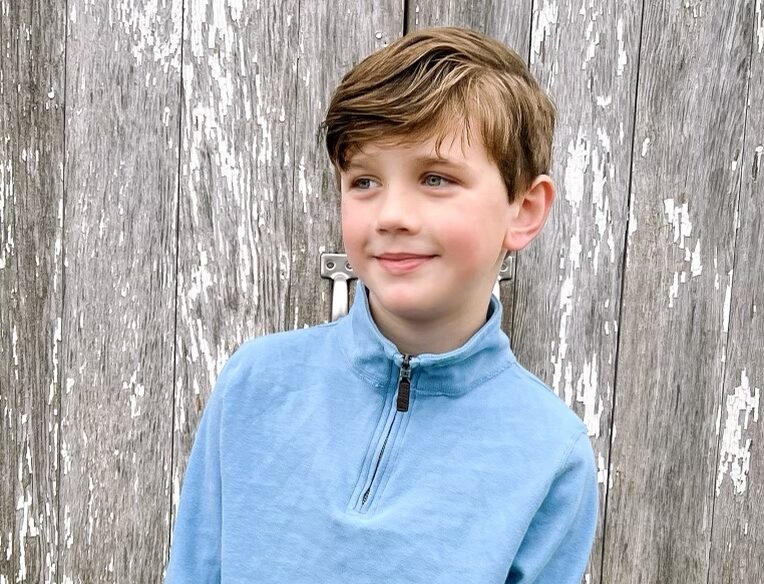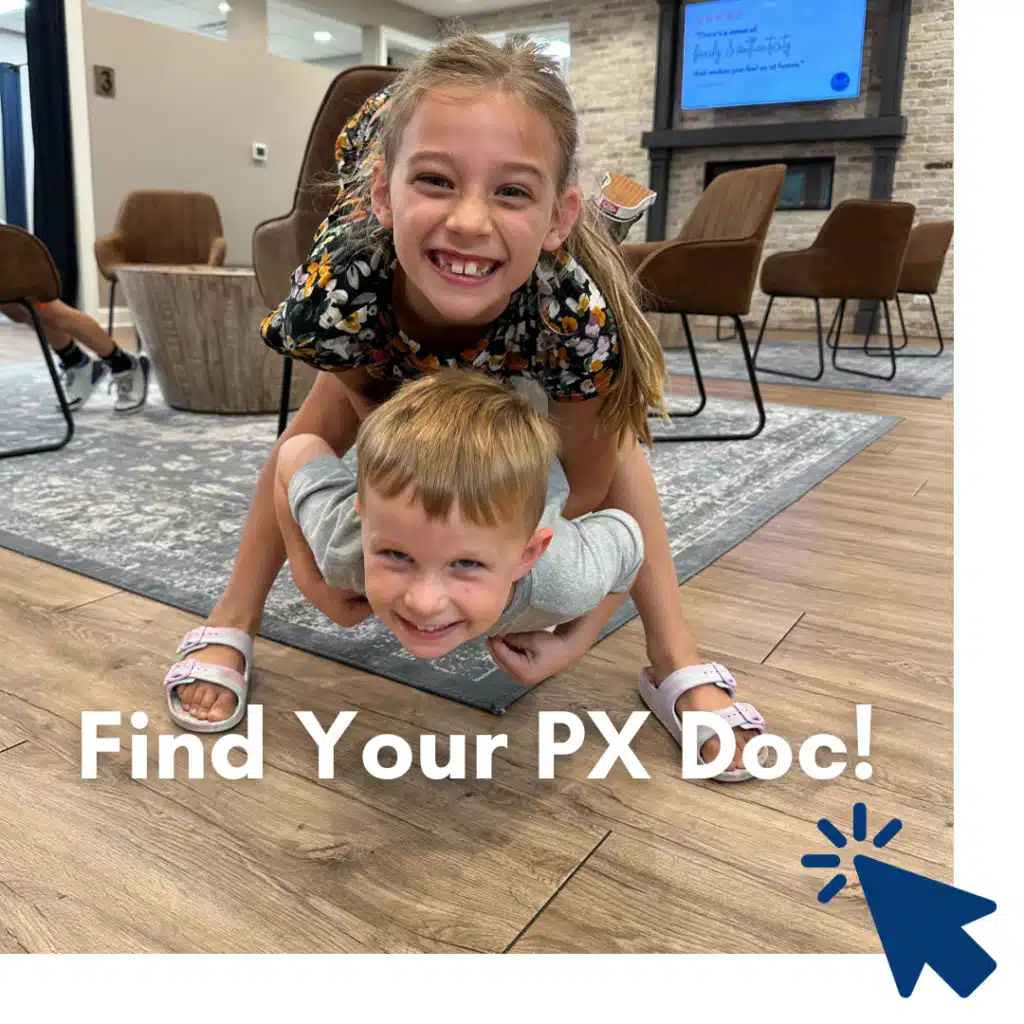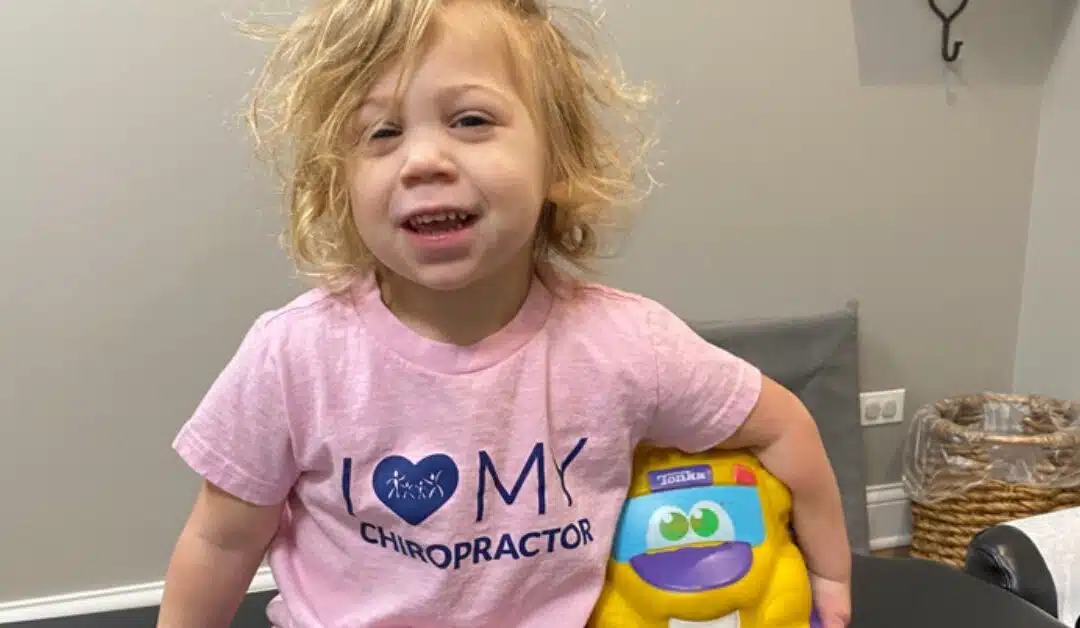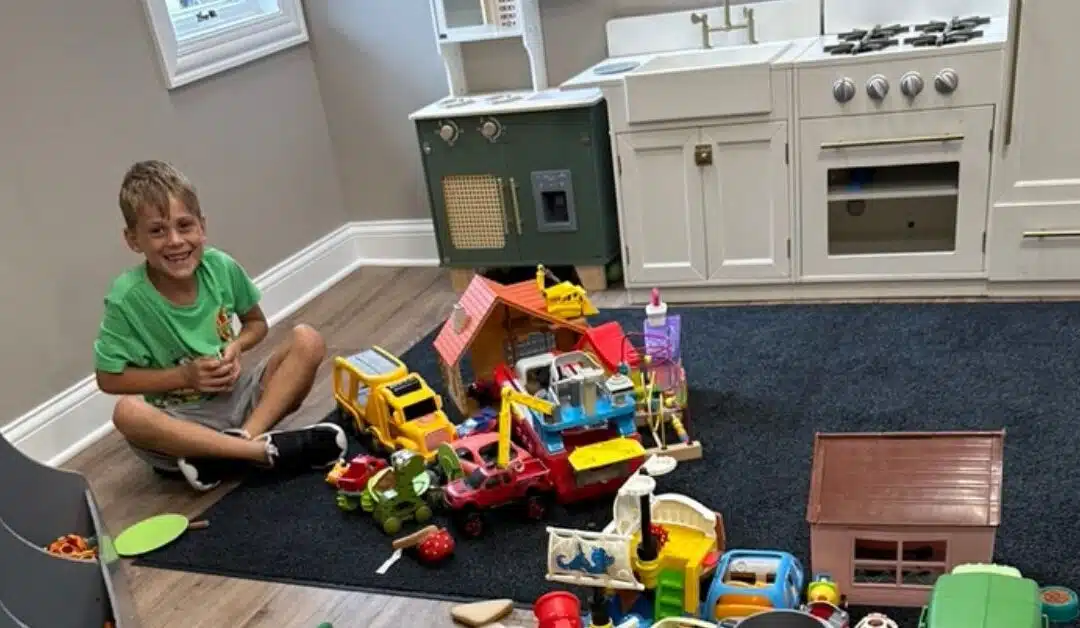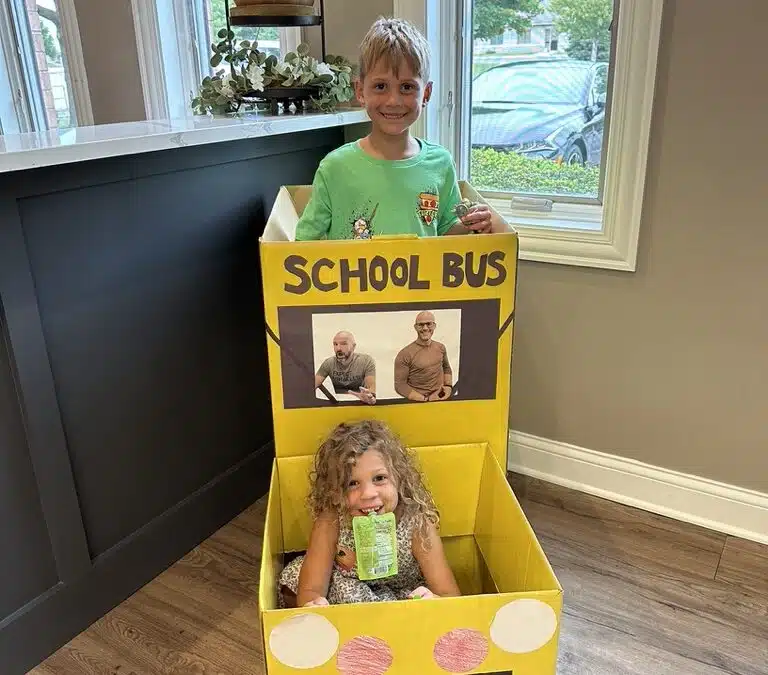“We don’t know what causes autism, and there is nothing you can do to help it. Just keep doing all the therapies you already have and hope for the best, but you’re probably going to have to put him into a special home when he’s older since you will be too old and not able to handle him, and he’ll never talk or walk normally.”
That was the prognosis and explanation of autism that Evan’s parents received from the doctor following their full-day neuropsychiatric evaluation just after his 3rd birthday. No answers, no hope, and not a very helpful action plan.
Every day, Evan had constant meltdowns and tantrums. Every day, he was clumsy and would fall and hurt himself. Every night he struggled to sleep more than 1–2 hours. And every day, they waited for more words to come, but he struggled to say even 1–2 words now, even by his third birthday. And on top of all that, Evan’s gut and immune system were a constant struggle, even after all sorts of diet changes, supplements, and detoxes.
But Evan’s parents knew in their gut that what the doctor was telling them was not the whole story. They knew that there had to be more hope, answers, and help out there for children with autism outside of the traditional medical system that had failed them—and Evan—thus far.
What is Autism Spectrum Disorder?
Autism, or autism spectrum disorder (ASD), is a neurological condition that affects how someone communicates, learns, and interacts with others. Additionally, children struggling with autism have chronic gut issues, immune challenges, developmental delays, and a whole host of other health-related battles they routinely face.
Autism is a lifelong condition, but most often, the signs appear in the first few years of a child’s life.
Autism is considered a spectrum condition, which means that the signs and symptoms each person experiences can vary. Most often, those with autism will experience difficulty communicating and interacting with those around them, restricted interests, repetitive behaviors, and other symptoms that affect their family, social, or school performance.
Factors vs. Causes of Autism Spectrum Disorder
The medical community doesn’t identify the cause of autism. Instead, they discuss the factors that could make someone more likely to develop autism or start showing symptoms. These are some of the factors that doctors might consider as risk factors for autism:
- Having an immediate family member who’s autistic
- Having certain genetic mutations
- Having fragile X syndrome and other genetic disorders
- Being born to older parents
- Being born with a low weight
- Having metabolic imbalances
- Experiencing exposure to heavy metals and environmental toxins
- Having a maternal history of viral infections
- Being exposed as a fetus to the medications valproic acid or thalidomide
In addition to these risk factors, autism is more common in boys than girls. Autism doesn’t occur more in any particular race or ethnicity—and social backgrounds like family income or education also don’t increase autism.
The problem with looking at autism through the traditional medical lens is that it’s outdated and incomplete. It is an improvement that the medical community now acknowledges that both environmental and genetic factors could lead to autism, but little research has been done on the main environmental triggers: prenatal (maternal) stress, birth trauma, and early exposure to medications (especially antibiotics) and other toxins that make up what we term “The Perfect Storm” of early life triggers and environmental exposures that alter neurological development.
Exploring the Root Causes of Autism Spectrum Disorders
Parents seeking to address the root causes of Autism Spectrum Disorders (ASD) are moving beyond traditional medical perspectives, focusing on factors that contribute to the development of autism. With increasing research and clinical experience, several key elements have been identified as root causes:
- Maternal Distress: Stress experienced during pregnancy.
- Birth Interventions and Injuries: Trauma or injuries during birth, such as those caused by forceps, vacuum extraction, or C-section.
- Early Exposure to Antibiotics, Toxins, and Chemicals: Contact with harmful substances in early childhood.
- Neurological Dysfunction (Subluxation): Misalignments in the spine affecting neurological function.
- Dysautonomia: Imbalance in the autonomic nervous system, often triggered by neurological dysfunctions.
- Vagus Nerve Damage: Injury or damage to the vagus nerve, which plays a crucial role in the autonomic nervous system.
Understanding these factors is essential for parents who wish to take a drug-free, neurological approach to help their children with ASD. By focusing on these root causes, they can gain a comprehensive understanding of their child’s condition and explore effective treatment options.
The Gut-Brain Connection, Microbiome, and Autism
Many natural health and integrative providers will seek to help heal and regulate the brain and nervous system by focusing on gut health and the microbiome, working on what’s called the “gut-brain connection” or enteric nervous system. This is a fantastic and important approach that absolutely works towards the root cause of autism, inflammation, and other related health challenges, but it’s important for both parents and providers to know that while this connection is absolutely vital, there is an even deeper layer of neurological dysfunction that must be addressed first.
When we dig into the majority of case histories and the most complete scientific research on the development of autism, so often we find that the nervous system stress and dysregulation actually shows up first, which then sets in motion disruption of the gut microbiome, increases inflammation, and interferes with the gut-brain connection.
This is why so many parents report that despite working on their child’s diet, removing gluten and dairy, going through detoxification programs, adding supplements, and cleaning up the home and environment, many children with autism still struggle with both gut and neurological challenges. Whenever we see this scenario clinically, where parents have exhausted both movement-based therapies and nutritional or natural-based therapies and their child still struggles, through process of elimination, we can really zero in on subluxation and dysautonomia within the nervous system as the real root cause.
Symptoms of Autism
Symptoms of autism usually start appearing in the first few years of life when a child begins communicating and interacting with others more often. These are some of the symptoms of autism you could notice:
- Not pointing at objects to show interest in them
- Not looking at objects when another person points at them
- Having trouble being interested in other people or listening to them
- Avoiding eye contact
- Wanting to be alone
- Having trouble talking about their feelings
- Having trouble understanding other people’s feelings
- Avoiding physical contact like cuddling or holding—or preferring not to be held when they don’t want to
- Looking unaware then someone talks to them but responds to other sounds
- Showing interest in people but being unable to know how to talk or play with them
- Repeating or echoing words or phrases said to them
- Having trouble expressing their needs using typical words or motions
- Repeating actions over and over again
- Having trouble adapting when routine changes, even slightly
- Having unusual or strong reactions to the way things smell, taste, look, feel, or sound
- Losing skills they once had—like a child forgetting words they used to be able to say
- Having a lasting intense interest in specific topics, such as numbers, details, or facts—or regularly fixating on interests and then switching quickly
- Having trouble sleeping
These are some general symptoms a child might show, but there are a variety of symptoms that could occur on the autism spectrum. If you want more specifics on the signs a child might show, check out our Early Signs of Autism article.
Diagnosis of Autism
Diagnosing autism spectrum disorder can often be difficult since there are no blood tests or scans that can show the disorder. Medical professionals will often diagnose autism based on behaviors and delayed developmental milestones.
Behavioral signs of autism usually appear around age two or three, but a child can be diagnosed as young as eighteen months old. Although an early autism diagnosis may be helpful for a child, autism diagnoses are often more reliable when the child is around age two or even older.
Treatment vs. Care for Autism
The medical community approaches autism like it’s purely a genetic and psychiatric condition and uses “treatments” for children with autism. There are two main ways doctors might “treat” autism: therapies and medications. Medications may be used to suppress symptoms like anxiety, irritability, repetitive behaviors, hyperactivity, attention problems, aggression, and other similar symptoms. Therapies might include behavioral therapy, occupational therapy, sensory integration therapy, and communication therapy.
The problem with this “treatment” approach is that it treats autism as a psychiatric condition and justifies having children use psych-treatment medications. In reality, autism is complex and a disorder of neuro-gastro-immune access and should be cared for as such.
As Neurologically-Focused Pediatric Chiropractors, we are able to address every single element of autism spectrum disorders by focusing our care on the central and autonomic nervous system, which in turn control and regulate every other major system of the child’s body. When it comes to helping a child with autism, nothing is more essential than addressing their nervous system dysregulation head-on. To learn more about exactly what this 5-Step Clinical Process looks like, click here to see it all broken down in detail.
Finding the Care Your Child Needs
To return to the story of Evan, after that awful and nearly inhuman prognosis from the traditional medical team, his parents made a quick call to our office to get him started with Pediatric Chiropractic care immediately. We took our time to dive deep into his case history, leaning into every question and concern his parents had, paying extra attention to all the ones that had been continually dismissed by their pediatrician and traditional neurologist.
From there, we ran our Neurological INSiGHT Scans to find the exact location and severity of Evan’s subluxation and dysautonomia patterns, allowing us to form a personalized care plan designed to start helping his nervous system heal, better regulate, and recover from the storm he had been through.
For the first two (2) weeks of care, we made safe, gentle adjustments to Evan’s nervous system that were focused on releasing the pent-up and stuck sympathetic stress within his system. Then, we moved into the next phase of care at 3x per week, focusing on neurological reorganization and restoration.
Here are the changes Evan and his family experienced within just a few weeks and months of Neurologically-Focused Chiropractic Care:
- Sleeping through the night, after years of only sleeping 2-4 hours at a time and being entirely sleep deprived
- Going from barely a few words to speaking in full sentences and much more clearly
- Going from chronically constipated and congested to having regular, daily bowel movements and getting over colds + illnesses quickly
- From severe gross motor challenges and incoordination to stronger, smoother motor tone + coordination
Flash forward many years — since Evan’s parents never gave up hope, sought out better answers, and took different action steps to address the root cause of his autism, he’s long past his diagnosis of autism and living life to the fullest!
In the case of autism, we find that so many families have not only already exhausted the traditional medical approaches of “watch and wait,” therapies, and maybe even medications. Additionally, many parents today have already gone deep into natural health and nutritional healing, working on their child’s gut health, inflammation, motor system, and so forth, but are still searching for full and complete healing.
Whether your family is just beginning your journey into autism or looking for that “last resort” like Evan’s family was, connecting with your local PX Doctor via our Provider Directory is the essential next step!
Take the next step in truly getting to the root cause of your child’s challenges with Neurologically-Focused Chiropractic Care, and begin your journey to optimal healing and helping your child reach their fullest potential possible!

